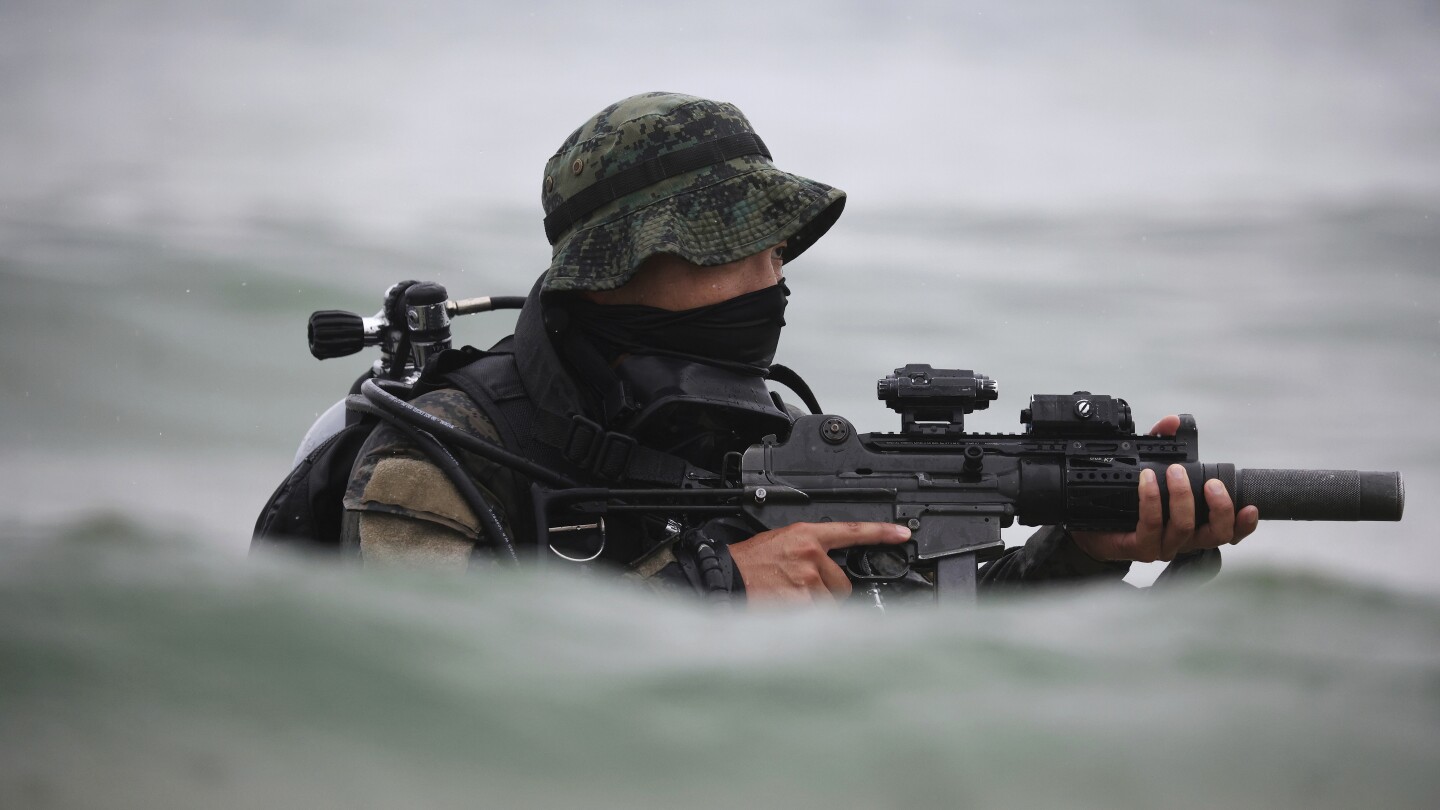SEOUL, South Korea (AP) — North Korean leader Kim Jong Un called for his military to be constantly ready for combat to thwart plots to invade his country, as he accused the U.S. of conducting “more frantic” naval drills with its allies near North Korea, state media reported Tuesday.
The U.S. and South Korean militaries are holding joint summer exercises that North Korea views as an invasion rehearsal. The allies have insisted the drills are defensive in nature.
Kim said in a speech marking the country’s Navy Day that falls on Monday that the waters off the Korean Peninsula have been made unstable “with the danger of a nuclear war” because of U.S.-led hostilities, according to the official Korean Central News Agency.
He cited a recent U.S.-South Korean-Japanese summit, the deployment of U.S. nuclear strategic assets and the U.S. drills with its allies.
“The prevailing situation requires our navy to put all its efforts into rounding off the war readiness to maintain the constant combat alertness and get prepared to break the enemy’s will for war in contingency,” Kim said.
The U.S. and South Korean militaries began the 11-day joint drills on Aug. 21. The annual Ulchi Freedom Shield training is a computer-simulated command post exercise. But they included field exercises this year as well.
North Korea typically responds to U.S.-South Korean military drills with its own missile tests. Its most recent known weapons test was its failed second launch of a spy satellite last Thursday. The day the drills began, KCNA said Kim had observed the test-firings of strategic cruise missiles.
Since the beginning of 2022, North Korea has carried out more than 100 weapons tests, many of them involving nuclear-capable missiles designed to strike the U.S. and its allies South Korea and Japan. Many experts say North Korea ultimately wants to use its boosted military capabilities to wrest greater concessions from the U.S.
The North’s testing spree has forced the U.S. and South Korea to expand their drills, resume trilateral training involving Japan and enhance “regular visibility” of U.S. strategic assets to the Korean Peninsula. In July, the United States deployed a nuclear-armed submarine to South Korea for the first time in four decades.
Earlier this month, the leaders of the U.S., South Korea and Japan held their first-ever stand-alone trilateral summit at Camp David. During the meeting, they announced they intend to put into operation by year’s end the sharing of real-time missile warning data on North Korea and hold annual trilateral exercises.
Kim has been pushing hard to expand his nuclear arsenal and introduce a slew of sophisticated weapons systems.
During his Navy Day speech, Kim said that military units of each service would be given new weaponry in line with the government’s decision to expand the operation of tactical nuclear weapons. He said the navy would become “a component of the state nuclear deterrence carrying out the strategic duty.”
This suggests North Korea would deploy new nuclear-capable missiles to his navy and other military services.

